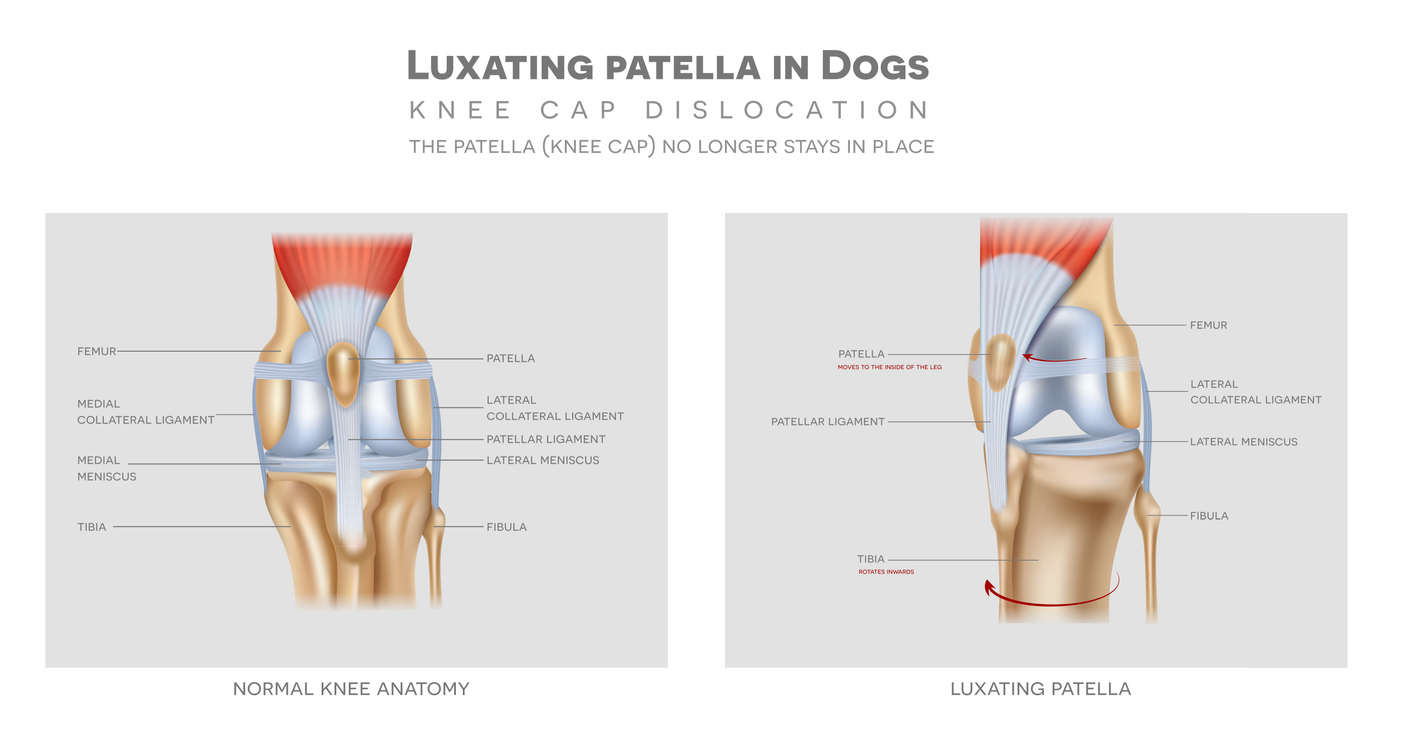Laurie's Blogs.
Sep 2023
Are Routine Radiographs Necessary for Follow Up of Dog Recovering Postoperatively from Medial Patellar Luxation?

A retrospective research study endeavored to answer this question, “Are routine radiographs necessary for follow up of dog recovering postoperatively from medial patellar luxation (MPL)?” I find the question, the scenario, and the outcome fascinating.
A study published in Veterinary Surgery March 2023 reported on the findings of records from 10 veterinary institutions and included 825 cases in their review. They found that at 6-weeks post-operative, “isolated radiographic abnormalities were identified in 3.3% (27/825) of dogs following MPL surgery and led to a change in recommendations in 3% (13/432) of dogs that were presented without owner or clinician concerns.” Furthermore, In the absence of owner and clinician concerns, the odds of having a change in convalescence plans were not different, whether or not isolated radiographic abnormalities were present.
The clinical significance is that “dogs that were presented for routine follow up after unilateral MPL surgery without owner concerns, lameness, analgesic treatment or a history of unplanned visits, and for which examination by a surgical specialist was unremarkable, were unlikely to benefit from radiographs.”
Here’s what I find fascinating about this study. In human medicine, we do not routinely take follow-up radiographs for any number of things. Typically, self-reporting and medical evaluation is sufficient to determine if the post-operative course of action is appropriate or not. Is that because, (at least here in Canada, as it would be in other countries with government funded healthcare) we are cognizant of the financial expenditure of such testing. Or perhaps is it because it has been found to be unnecessary. Really, it could be either, or it could have started as a financial disincentive that bore out to be unnecessary anyways.
To me, I wonder if this finding might be expanded further and into other scenarios. Dogs with intervertebral disc disease – if clinically, they are pain-free and functional should we keep them confined to a basket if an x-ray were to show that they have calcified discs? (Yes, that’s a real life clinical case I’ve seen!) A dog with radiographic evidence of hip dysplasia who plays agility and is otherwise fit and health – should they be told to stop high end activity and only go for walks? (Yes, another case scenario I’ve encountered) No! That dog should stay fit, healthy, and active unless signs of pain or dysfunction become apparent.
Should the radiograph trump / supersede the physical findings? That’s the question, and that is where this study takes my thinking. I find it an interesting point of discussion. (P.S. I never thought I liked philosophy… but here I am philosophizing!) I guess I’m left wondering IS there a time when radiographic finding supersede physical findings? (And let’s stick with the musculoskeletal system here…) I would lean towards, “not likely”. I would still take the physical findings over the radiographic findings… but that’s just me, and it likely has to do with my professional underpinning as a physiotherapist.
What are your thoughts? I’d love to know.
On that note, until next time… cheers!
Laurie
Reference:
Brincin C, Payne DJL, Grierson J, et al. The value of routine radiographic follow up in the postoperative management of canine medial patellar luxation. Vet Surg. 2023 Apr;52(3):379-387.


